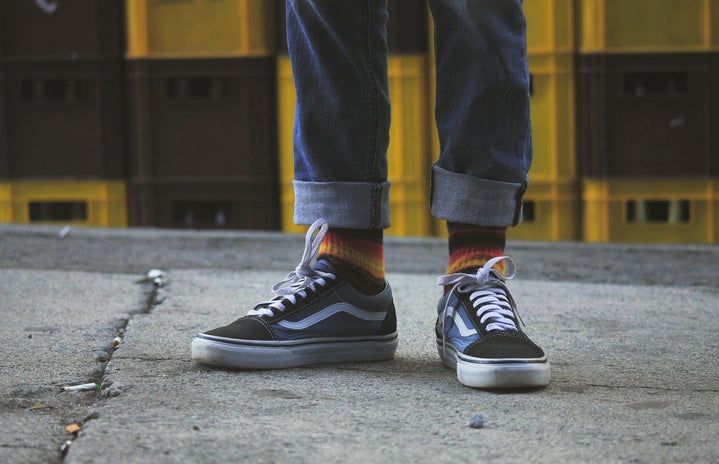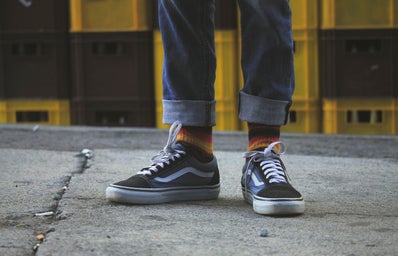Now that pride month is upon us, LGBT people are celebrating across the country with various concerts, parades, and parties at queer bars and clubs. It is understandable why non-LGBT people want to attend these events: they’re fun, glittery, bright and colorful. However, it is important to remember that Pride events are spaces for queer people; allies are guests in that space and must act appropriately.
Here’s an example of what not to do: a group of girls who went to my high school attended LA Pride two years ago. What people saw were a group of girls dressed in bright colors and glitter, posing for Instagram photos. What people didn’t see in those photos were those same girls in my high school locker room yelling, “There better not be any lesbians in here!” They also didn’t see one of the girls complaining that a low ponytail made her look like a “dyke” (a slur for masculine-presenting lesbians). They didn’t see one of those girls agree with my teacher when he supported transphobic bathroom bills because he didn’t understand why “men pretending to be women” (offensively referring to trans women) should be allowed in “different” bathrooms. This behavior, to put it mildly, is not the behavior of allies.
These are examples of being vocally homophobic and transphobic. If you’re going to act like this, don’t go to Pride. Nobody wants your bigotry! But if you actually care about LGBT people, then there are ways in which non-LGBT allies can (and should) be conscious allies of the cause.
A big one is simply understanding what Pride actually is. While Pride can look like an escapist wonderland, Pride events are rooted in political action and protest by LGBT people for basic rights and protections. Pride can be traced back to the Stonewall Riots, which, on June 28, 1969, were in response to police violence against LGBT attendees of the Stonewall Inn. An important part of this history is that the first activists were not white, middle-class, cis gay men (even though they seem to overrepresent mainstream LGBT representation today). Key members in the Stonewall Riots are Sylvia Rivera, a Latina American gay and transgender rights activist, and Marsha P. Johnson, also a gay and transgender rights activist. Both activists were drag queens, LGBT people of color, and both were founding members of the Gay Liberation Front, as well as Street Transvestite Action Revolutionaries (S.T.A.R.). Those who participated in the Stonewall Riots were also the most vulnerable LGBT populations: drag queens, prostitutes, homeless youth, transgender people, feminine gay men and butch lesbians. So even if you show up to support your gay best friend, make sure to show some respect for the history of Pride and the communities that helped pave the road to LGBT rights. Often these communities are forgotten in LGBT activism, and it is important to focus Pride activism on transgender rights, sex workers, people of color, and people in poverty who are all too often excluded from these spaces.
Similarly, allies should understand that while Pride is celebratory, LGBT struggles did not end with the legalization of gay marriage. Educating yourself on the modern struggles of LGBT communities is a fantastic way to be an ally. This is in no way an exhaustive list, but a couple of important causes to pay attention to are: LGBT youth homelessness, violence against transgender people, LGBT healthcare, and including LGBT history into school curriculums. You may also see political coalitions at Pride events, and it is respectful to take time out your partying to listen and acknowledge these coalitions. They are carrying the torch from Stonewall, and their work needs to be supported if we want Pride to continue.
And finally, a tip that encompasses all of these things above: be courteous. Like I said before, allies are guests in these LGBT spaces, and your voice should not be the loudest in the room. You may see things in Pride spaces that shock you or make you uncomfortable, but Pride celebration is not the time to openly gawk or voice your disagreement (unless, of course, that something is harming people, such as violence and/or discrimination). Now is also not the time to ask people invasive questions about their sexuality, gender identity, or relationship(s). Pride should be a safe space, not a time where people need to explain or defend themselves.
Going back to those girls from my high school, I wonder if any of their opinions/behaviors have changed, or if they just show up to Pride because one of their favorite artists is performing, or because it’s just another fun party to go to. While they may have not actively been discriminatory at Pride, LGBT people who know their previous behavior may feel unsafe in what needs to be a safe space. Since their damage was voicing discriminatory comments in public spaces, the least they could do is affirm the LGBT community, or denounce homophobia, transphobia, and biphobia. At the least, they could’ve included this in the Instagram captions of their Pride photos. Don’t be like those girls this Pride. If you’re going to show up for Pride, then show up for LGBT people and their causes. Otherwise, Pride loses its historical value and significance.



